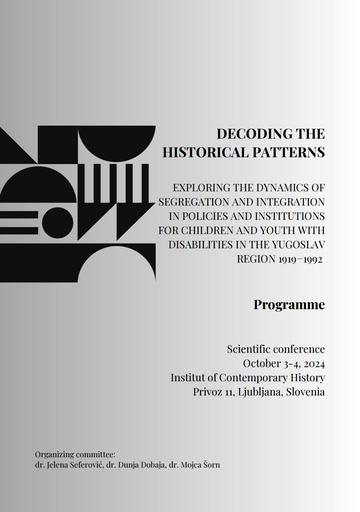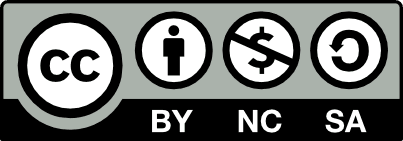/
Dogodki
/
Konference
Segregated special education for visually impaired children in socialist Yugoslavia – isolation and/or preparation for life and work?


To delo avtorjev Dragana Gundogan, Nataša Milićević je ponujeno pod Creative Commons Priznanje avtorstva-Nekomercialno-Deljenje pod enakimi pogoji 4.0 Mednarodna
Datoteke (1)
Opis
One of the main characteristic of the Yugoslav socialist societyis the rapid development of the educational system. Thistrend led to decrease of the illiteracy rate whichwassignificant before the World War II. This process wenttogether with the increasing number of schools, students andteachers on all educational levels. Moreover, it influencedthedevelopment of special educational system significantly, giving more opportunity to children and the youthwithdisabilities to educate themselves. Nevertheless, the special educational institutions had its drawbacks developing inthesegregated manner. The aim of the paper is to present thedevelopment of special education for visually impairedchildren in the socialist Yugoslavia. Furthermore, thecontextual social, economic and ideological factors whichinfluence its growth will be explored. The research questionswere threefold. Firstly, we examined educational practices in terms of curricula, extracurricular activities and training in the segregated educational institutions. Secondly, we presented school climate and interpersonal relations among students and between teachers and students. Thirdly, it will be examined the importance of the formal and informal education in the segregated institution for further career and personal life and development of its users. Methodologically, this topic will be explored in two different ways. Firstly, authors will analyze unpublished archive sources about primary and secondary special segregated educational centers in which visually impaired children were educated and socialized. Secondly, as a part of explorative analysis it will be presented the analysis of semi-structured interviews with the visually impaired people who were users of segregated educational institutions during the socialistic period. Qualitative approach, particularly oral history and life stories, will be used in order to give personal, individual perspective and highlight their experiences and attitudes about their education.
Metapodatki (12)
- identifikatorhttps://hdl.handle.net/11686/71083
- naslov
- Segregated special education for visually impaired children in socialist Yugoslavia – isolation and/or preparation for life and work?
- avtor
- Dragana Gundogan
- Nataša Milićević
- soavtor
- Darja Zaviršek (mod.)
- predmet
- slabovidni
- otroci
- senzorične motnje
- Izobraževanje
- Jugoslavija
- opis
- One of the main characteristic of the Yugoslav socialist societyis the rapid development of the educational system. Thistrend led to decrease of the illiteracy rate whichwassignificant before the World War II. This process wenttogether with the increasing number of schools, students andteachers on all educational levels. Moreover, it influencedthedevelopment of special educational system significantly, giving more opportunity to children and the youthwithdisabilities to educate themselves. Nevertheless, the special educational institutions had its drawbacks developing inthesegregated manner. The aim of the paper is to present thedevelopment of special education for visually impairedchildren in the socialist Yugoslavia. Furthermore, thecontextual social, economic and ideological factors whichinfluence its growth will be explored. The research questionswere threefold. Firstly, we examined educational practices in terms of curricula, extracurricular activities and training in the segregated educational institutions. Secondly, we presented school climate and interpersonal relations among students and between teachers and students. Thirdly, it will be examined the importance of the formal and informal education in the segregated institution for further career and personal life and development of its users. Methodologically, this topic will be explored in two different ways. Firstly, authors will analyze unpublished archive sources about primary and secondary special segregated educational centers in which visually impaired children were educated and socialized. Secondly, as a part of explorative analysis it will be presented the analysis of semi-structured interviews with the visually impaired people who were users of segregated educational institutions during the socialistic period. Qualitative approach, particularly oral history and life stories, will be used in order to give personal, individual perspective and highlight their experiences and attitudes about their education.
- založnik
- Inštitut za novejšo zgodovino
- datum
- 03. 10. 2024
- tip
- video
- jezik
- Angleščina
- jeDelOd
- pravice
- licenca: ccByNcSa
